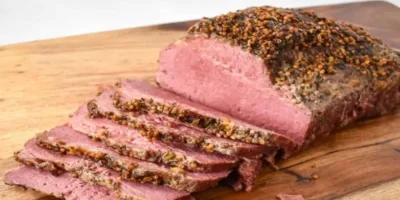As an organic retailer, you should first understand all the basic USDA organic seal guidelines. The same rules that apply to other manufacturers and establishments also apply to retailers. Our guide explains the USDA organic seal and how to get it.
USDA organic seal FAQ
01. Is correct labelling relevant if the trader is not certified?
While it is true that bio-certification is a choice and is not mandatory for retailers that carry organic products, you need to think about the right labelling rules.
In general, the National Organic Program (NOP) requires organic retailers to be responsible for preventing the mixing and contamination of organic products with banned substances, and retailers must keep records showing how how organic products were handled correctly from production to delivery to the customer. Part of the handling is proper labelling. Not being certified doesn’t mean you have to ignore signage and labels.
02. Do retailers need to use the organic label?
The use of the official USDA organic label, also for 100% organic products, is voluntary. Retailers don’t have to use the label, but it offers great benefits, for example:
- Consumers want to buy real organic matter.
- Customers will understand why prices are higher.
- The organic seal is well known and has marketing advantages.
- When selected, most savvy organic consumers do not have the use of non-labelled organic substances.
- Organic substances can play an important role in your company.
03. Do the organic labelling guidelines apply to packaged goods?
Often, when retailers think of organic matter, the product immediately comes to mind. It is true that the labelling directive applies to loose and packaged products. National organic standards for organic products apply to all organic products, not just for production.
If you correctly comply with the labelling requirements, you must also take into account packaged goods such as coffee, flour, cereals and juice, bulk in containers and other organic products, certified organic textiles or officially certified organic body care.
04. How should retailers label bulk organic substances?
If your store buys organic mass-produced products and sells them in containers, you can indicate that the product is organic, provided that the information is contained in the original packaging or in the shipping documents. For example, if the original shipping packaging is bearing the USDA Organic Seal, you can post this information in a collection container containing the product.
Resellers do not have to indicate that a product is organic, but it is in their best interest.
05. How should retailers label exempt organic products?
Before you think about how to deal with exempted products, you need to make sure that they are really excluded.
If you purchase locally grown (or non-locally grown) organic products from a small organic farm or other products that are really exempt from organic certification, you can still label these products carefully.
National Organic Standards Pursuant to Section 205.310, agricultural products organically produced or treated from an exemptor or excluded holding may, the USDA seal, the seal of a certifier or any other identifier represents the exempted or excluded holding as a certified organic. The product also cannot be presented as a certified organic for each buyer.
What you can do is identify the product asorganicMsgstr “” Excluded organic products cannot be processed by your farm and are still called“organicIf, for example, you serve potato salad with organic but excluded potatoes and other organic ingredients in your deli, you cannot call the potato salad organic.
The processing rule applies to both multi-ingredients and individual ingredients. If you squeeze out juice with organic but excluded oranges, you cannot sell this juice as organic.
06. Can delicacies be labelled as organic?
If you have a delicatessen, juice bar, or bakery in your retail store that makes various certified ingredients from certified organic ingredients such as salads, soups, bread, etc., you may not do so in accordance with the national organic standards section 205.309. Mark these end products with the USDA Organic Seal or make any labeling claims that could lead a buyer to believe that the product is organic..”
If the product consists of at least 70% to 95% organic ingredients, you can indicate on the packaging that it is “manufactured product (specified organic ingredients)”. However, no more than three ingredients can be specified. For example, if your bakery bakes cinnamon snails, you can say on the packaging:“Made from organic flour, eggs and milk.”
07. Where are the official USDA guidelines for organic labelling?
The organic policy is constantly changing, so it is wise to stay up to date. For the most up-to-date guidelines for organic labelling, see National Bio Program, Part 205 of the Electronic Code of Federal Regulations (e-CFR). Subsection D Contains labels, labels, and marketing information that are useful to retailers, especially 205,300 to 205,311.
The Electronic Code of Federal Regulations and the information you receive from your local accredited certifier are the most up-to-date and useful information available.
Find more business advice and guides




